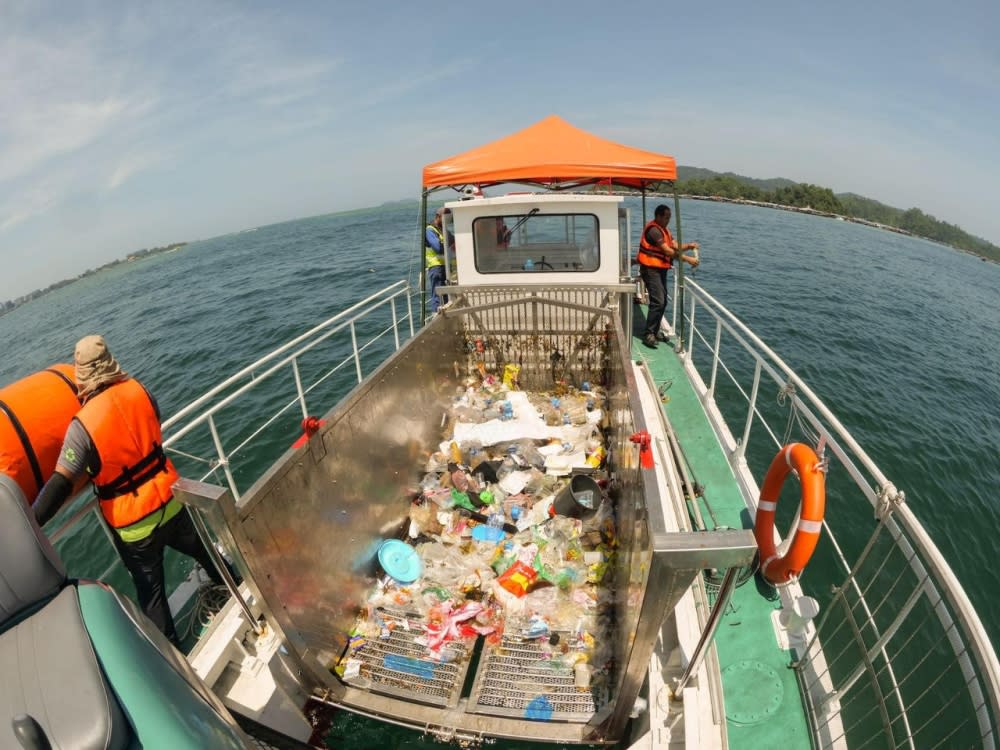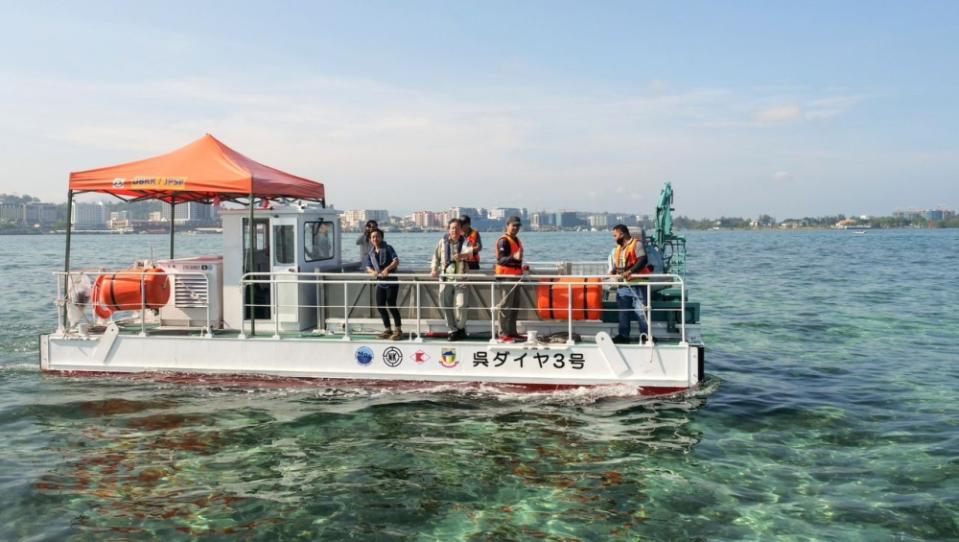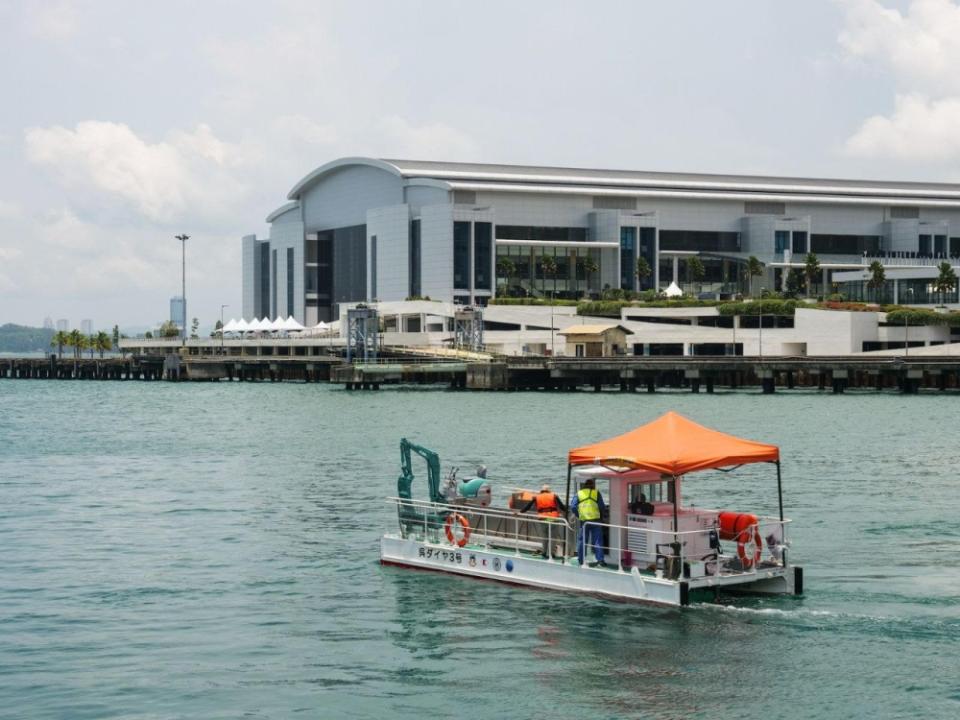KK City Hall says Japanese vessel may be deployed to clean sea off Sabah capital

KOTA KINABALU, April 20 — The waters of the Tunku Abdul Rahman Marine Park, one of the most popular tourist attractions in the state, may get a boost of cleanliness with the help of its first waste collection vessel that can clean up trash on a large scale.
A prototype sea-cleaning ship by Japanese ship maker Kure Daiya, with the help of consultancy firm Nippon Koei, has been running tests for one of their vessel designs in the city’s marine park in the last eight days with the help of various local authorities.
The success of the demonstrations, collecting, and sorting through debris, may see Kota Kinabalu City Hall (DBKK) adopting the vessel that is estimated to extract some 900kg of trash per day at the vessel’s full operating capacity.
DBKK deputy director-general (operations) Robert Lipon today said that the ongoing demonstrations were to determine the effectiveness of the technology in the seas and rivers around the state capital.
He said that there were still adjustments and improvements to be made and that another round of testing would be conducted during the monsoon season in June.
“City Hall is looking into the best way to address the growing concern of the marine debris around the waters off Kota Kinabalu.
“The demonstration was to examine the suitable type and specification of waste collection vessels in waters off Kota Kinabalu,” said Lipon.
The trials were a follow-up to a memorandum of understanding signed between DBKK, Kure Daiya and non-governmental organisation Marine Research Foundation (MRF).

The vessel arrived in Kota Kinabalu in January but testing only began last week. — Picture courtesy of Marine Research Foundation
The vessel arrived in Kota Kinabalu in January but testing only began last week.
“The vessel has the capacity to collect one tonne of rubbish and during the one-week test, we collected lots of plastic caps, food packages, plastic bottles, straws and diapers, among others,” Lipon said.
After being collected, the waste is offloaded at the Kota Kinabalu Port where it is sorted and weighed by type to investigate the current situation of waste in the bay areas around the state capital city.
Sabah, famed for its beautiful islands and beaches, has been grappling with the problem of marine waste in its waterways, which often end up in the sea, which tourist boats and divers catch sight of. Several hot spots around Gaya and Sepanggar island, the city’s coastal areas where population is high, as well as the Inanam River have been targeted for the waste collection.
MRF executive director Nick Pilcher said that the rubbish in the sea has been a perennial issue in Sabah for many decades.
“The reasons are many, and more complex than one may think. Some are discarded from boats and coastal homes with no care or concern for the ocean or what impact this waste might have.
“But while the reasons are many, and complex, and the solutions are not things we will develop overnight, we can’t quite leave the plastics in the ocean, can we?
“We can’t leave them there to continue to be a hazard to turtles, and to fish, and sharks and rays and dolphins and whales. That’s why we need these boats. To get rid of the plastic waste that is clogging our oceans,” he said.
Pilcher acknowledged that there were various other vessels in the market, many with much bigger capacities.
But he said that the larger vessels just can’t operate in the tight confines of Sabah’s many bays and estuaries.
He said that the current prototype will have to be upgraded and modified to adjust to certain needs.

MRF executive director Nick Pilcher said that the current prototype will have to be upgraded and modified to adjust to certain needs. — Picture courtesy of Marine Research Foundation
“At present we are working with DBKK to segregate the waste, and different wastes are being offered to different recyclers. Unfortunately there is still a lot that has to go to a landfill, but the more we can segregate, and the more we can recycle, the better.
“Our goals are to recycle as much as we can into useful products for humanity, not plastic art or anything like that, but useful items that people need, all derived from the ocean,” he said.
Pilcher hopes that the local councils will take up the vessel as part of their waste management programmes while simultaneously creating awareness and reduce the use of plastic and the importance of proper waste management.
The project is being funded by the Japan International Cooperation Agency who worked with Kure Daiya and signed a contract in December 2022 for a year-long project of sustainable development goals business model formulation survey with the private sector for marine debris collection using waste collection vessel in Malaysia.
Each vessel costs around RM2.6 million if manufactured in Japan.



